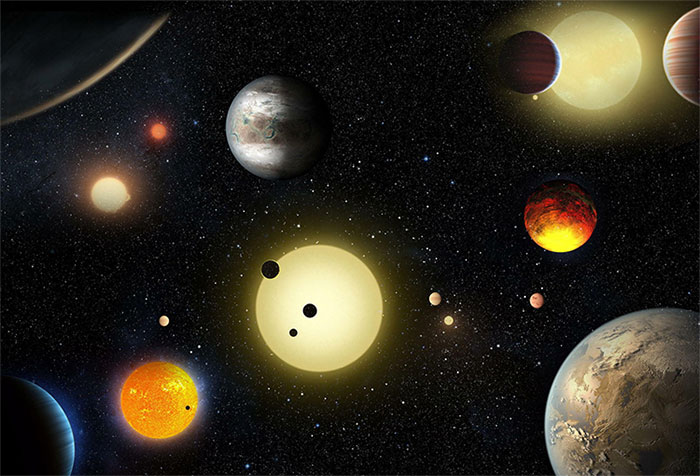The Milky Way might contain 10 billion Earth-like planets
Through computer simulations and real data, experts estimate the number of planets the size of the Earth, life may exist.
Scientists from Penn State University used data from NASA's Kepler telescope to calculate the number of Earth-like planets in the Milky Way, Science Alert on August 19 reported. Accordingly, every four Sun-like stars have a star with an orbiting Earth-like planet , meaning that the Milky Way can contain a total of 10 billion such planets.

The Milky Way might contain billions of planets the size of Earth and liquid water exists on the surface.(Photo: Newsweek).
This is an important step in the search for extraterrestrial life because organisms are likely to survive in warm enough places to retain liquid water."Our investment will be more effective if we know where to look and when," explains Eric Ford, a professor of astrophysics and co-author. New research helps scientists better plan for future space exploration.
The expert group defines Earth-like planets as 0.75 - 1.5 times the size of the Earth and orbits the star with orbit 237 - 500 days. This is considered to be a "region of life survival" because of the distance from the host that is suitable for liquid water to exist on the surface of the planet.
According to Kepler's observation, 20% - 50% of stars are visible on the night sky with Earth-like planets in the "habitable zone". However, Ford and his colleagues did not want to estimate the number of Earth-like planets in the Milky Way based solely on the extrasolar planets Kepler found. The reason is that Kepler's search is suitable for a large planet near the star, which is not really effective for the small planet away from the host star. Moreover, this telescope is also about small, low-light stars with a mass of about 1/3 of the Sun.

NASA's Kepler Space Telescope.(Photo: Business Insider).
To estimate the number of planets that Kepler might have missed, the team of scientists simulated computers based on this data from the telescope and the Gaia spacecraft. They then compared the results obtained with Kepler's actual data to estimate the number of "qualified" objects. Depending on the definition, the Milky Way might exist 5-10 billion such planets, Ford said.
The next step to finding life outside of Earth is to study the structure of these planets."The scientific community is particularly interested in finding biomarkers, or signs of life, in the atmosphere of planets about the size of the Earth , " Ford said.
A planet within the " habitable zone" still needs a sufficiently stable atmosphere, which helps maintain a suitable temperature for liquid water to exist on the surface. Experts can predict the atmospheric composition of an exoplanet by observing the star's light when the planet passes through.
- The Milky Way has billions of planets close to Earth
- 100 billion planets reside in the Milky Way
- There are at least 50 billion planets in the Milky Way
- 100 billion planets in the Milky Way
- Mysterious planets have a 'mother' from another galaxy
- There are billions of planets like Earth
- Images of 1,235 planets may have life
- Two more decades will meet
- Why can't we 'encounter' aliens?
- The mass of the Milky Way
- Discover more than 700 planets outside the solar system
- Enjoy the pure Milky Way season
 Van Allen's belt and evidence that the Apollo 11 mission to the Moon was myth
Van Allen's belt and evidence that the Apollo 11 mission to the Moon was myth The levels of civilization in the universe (Kardashev scale)
The levels of civilization in the universe (Kardashev scale) Today Mars, the sun and the Earth are aligned
Today Mars, the sun and the Earth are aligned The Amazon owner announced a secret plan to build a space base for thousands of people
The Amazon owner announced a secret plan to build a space base for thousands of people